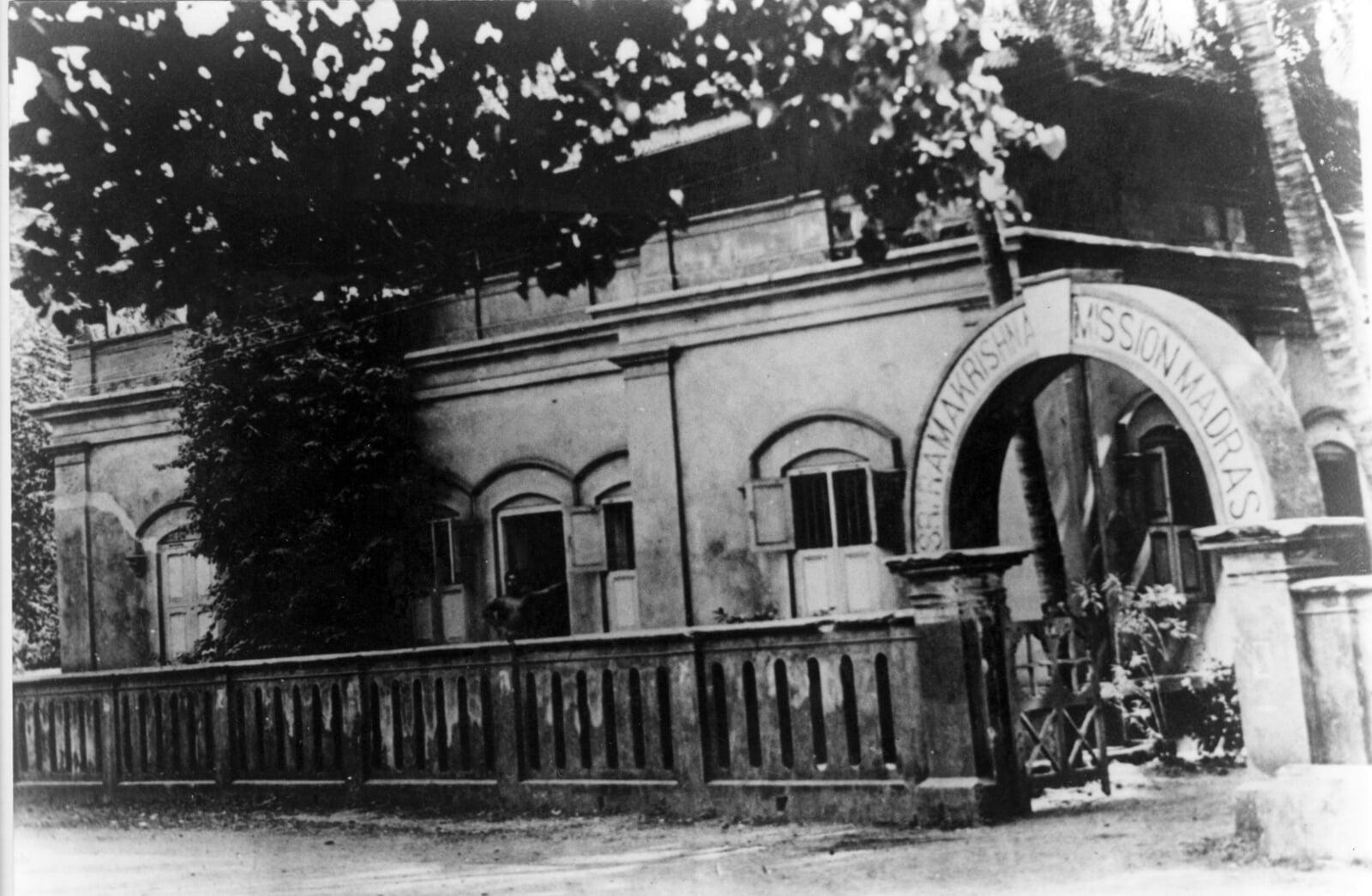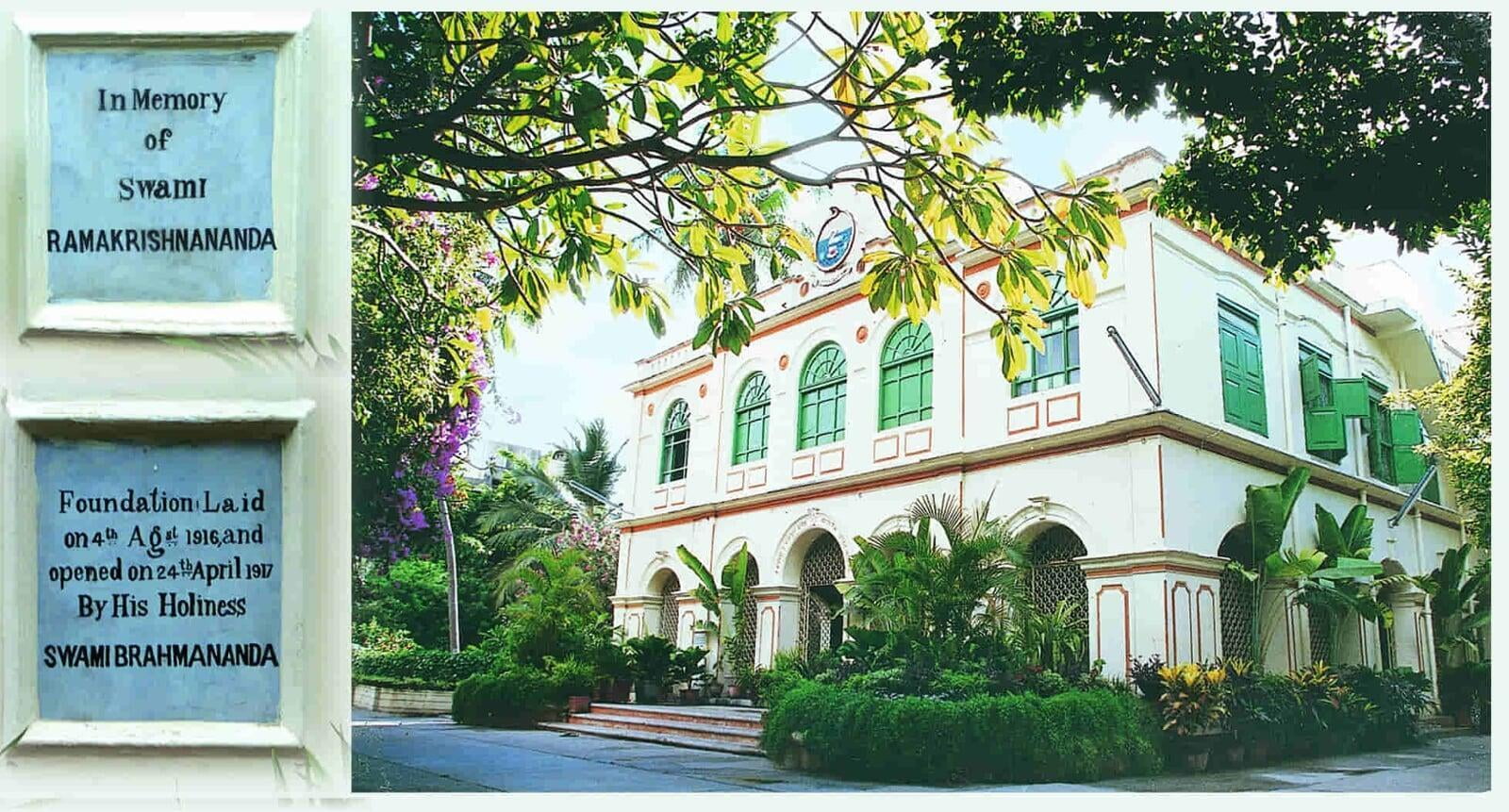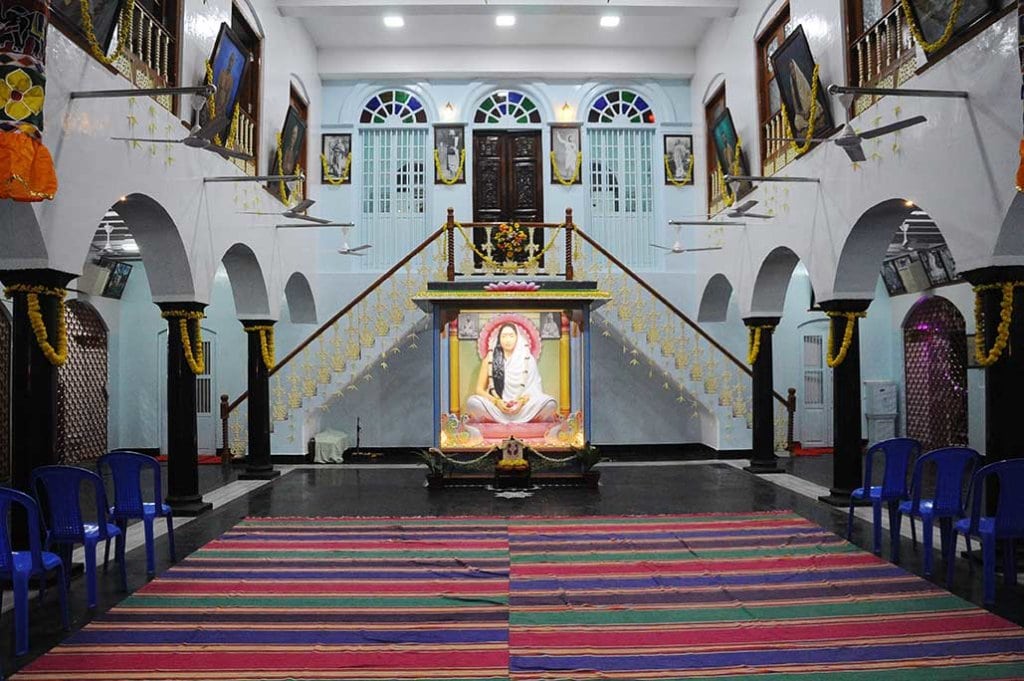The Prayer Hall in the Old Temple was a witness to many important events. Besides conducting a regular puja (with Anna bhog) for 80-plus years (except for a short period during the second world war in 1942, when due to the fear of bomb threat from Japanese forces, the puja to the sacred relics of Sri Ramakrishna was briefly shifted to Uttiramerur), the shrine has been a place of many Spiritual and cultural events. All the seva (ritual-services) to Sri Ramakrishna were done here as per norms and practices laid by Swami Ramakrishnananda. Swami Brahmananda ordained Swami Yatiswarananda (later Vice President of the Order) into sannyasa in the shrine. Swami Vireswarananda. The 10th president of the Order was invested with Brahmacharya vows here. Two direct disciples of Sri Ramakrishna – Swami Shivananda and Swami Vijnananda (2nd and 4th President of the Ramakrishna Order) – also stayed in the building during their visits. Several eminent monks of the Order such as Swami Ashokananda, Prabhavananda, Akhilananda and many others have lived and performed intense spiritual practices in this building.
With a seating capacity of 300, the Main Hall was the place where most weekly and Jayanti-day discourses were held for several decades. This prayer hall was the main hall for all important pujas, public meetings and celebrations till 1963. In this year 1920/21, Durga Puja was conducted here. For this purpose, at the behest of Swami Brahmananda, Ramlal Chattopaddhyaya, the nephew of Sri Ramakrishna brought the image of Mother Durga from Calcutta. Durga Puja in image was held here again in 1952, 1953 and 1954. The centenary celebrations of Sri Ramakrishna (1936), Holy Mother Sri Sarada Devi (1953) and Swami Vivekananda (1963) were held in this hall. Many national leaders such as C. Rajagopalachari, Morarji Desai, Kamaraj and others have spoken here on various occasions. On the occasion of 150th Birth Anniversary of Holy Mother Sarada Devi, fiberglass statue of the Holy Mother was places here in 2004 – after taking it around in a procession in various parts of Tamilnadu.
The building was also the residence of the Presidents of Math such as Sharvananda, Swami Siddheswarananda, Swami Yatiswarananda and Swami Kailasananda and Vice Presidents of the Ramakrishna Order have also stayed in this building during their visits to Madras. Earlier, the Math Office and the Books Despatch and Packing Sections were also housed here. There are five living rooms on the first floor of this building which are even now used by monastic members.
Since the year 2000, after the new universal temple of Sri Ramakrishna was consecrated in the same premises in the site adjacent to the library, the Old Temple is used for meditation, occasional classes and meetings for students and devotees.area. This provided the much needed space both for conducting the puja and other services at the altar and for accommodating the devotees (with seating capacity of 40) in front. A small Gopuram was also added later. On the southern side of the shrine, one room was used as shayana griha for Sri Guru Maharaj and the adjoining room had large portraits of Holy Mother Sri Sarada Devi, Swami Vivekananda, Swami Brahmananda and Swami Ramakrishnananda.
The terrace of the Prayer Hall has been built in native Madras Terrace Style (the method of roof-cum-floor construction in which brick-bats are stacked diagonally on thin and long wooden beams). Other architectural features, typical to old buildings in Madras, are the use of rectangular black stone for flooring (which had to be changed from the ordinary cement flooring to the existing marble flooring), and pillars, and arched entrance and side openings.




